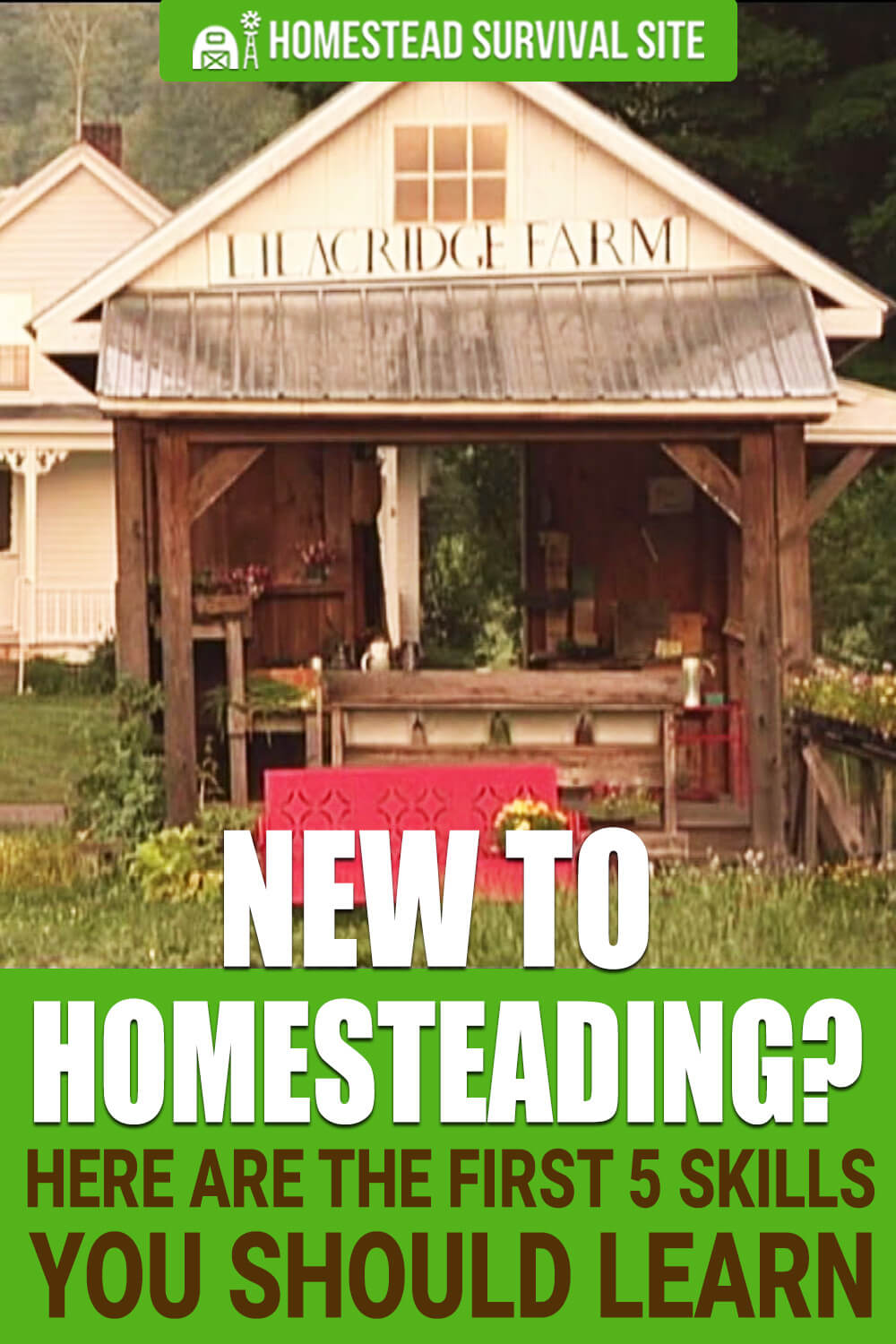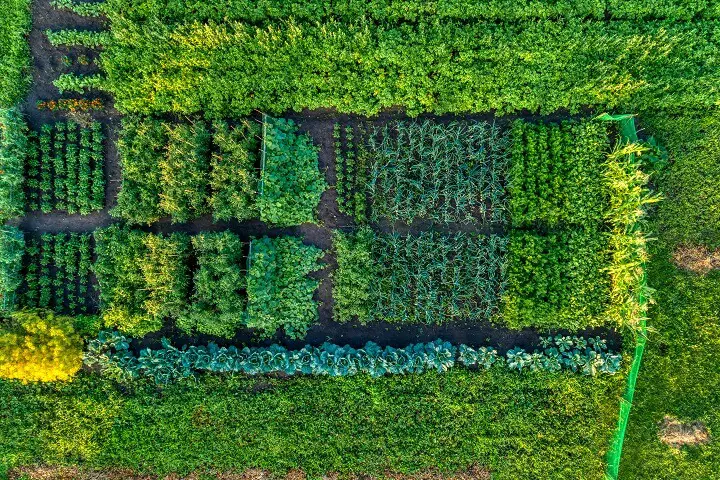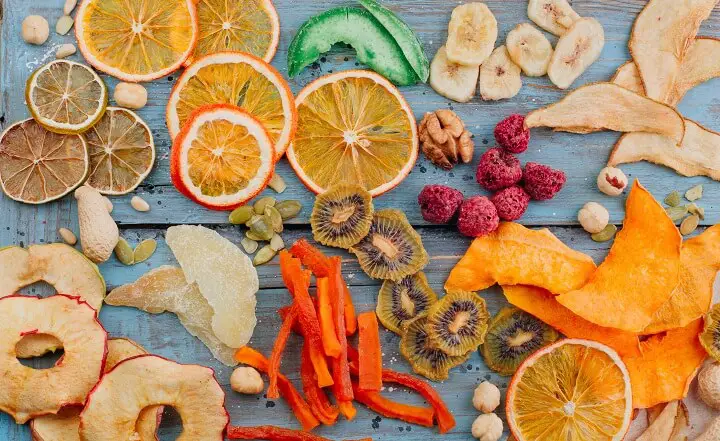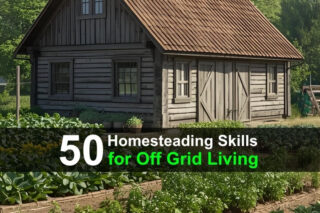Estimated reading time: 8 minutes

Did you know you don’t have to own land to start homesteading? The first step to homesteading is figuring out which homesteading skills you should learn. No matter where you live, new homesteaders can work on their skills.
I always tell this to people who say they want to become homesteaders. Don’t wait! Even if you live in an apartment, you can develop skills no matter where you live.
Want to save this post for later? Click Here to Pin it on Pinterest!
Not all skills are necessary for homesteaders, and not all need to be started first. You can find lists of hundreds of homesteading skills that might come in handy in your quest to become more self-sufficient. A lot of those skills are beneficial, like learning how to make your soap, but they aren't necessarily crucial to your success.
So, let’s take a look at the first five skills you must learn if you are new to homesteading.
1. A Make-Do Attitude
The first thing I tell anyone who wants to be a homesteader is that they need to change their attitude and perspective on life. One of the main things that stands out to me about homesteaders is their ingenuity and creativity when it comes to solving problems and addressing issues.
Their first instinct isn’t to go to the store and find the easiest (but also most expensive) solution to their problem. Homesteaders look for difficult – often free – solutions for their problems. That might mean you use what you have to fix another thing, or you could forego using something.
You have to evaluate if you need certain things in your life. My grandma always told me to “Use it up, wear it out, make it do, or do without.” That's genuinely a homesteader's mindset.
- How can I use this? That might be the extra veggies leftover at the end of the year or leftovers from the previous night’s dinner.
- Wear it out by repurposing as much as you can. Broken bowls can be used as planting containers. You can keep handing down clothes, then eventually make cleaning clothes out of them.
- How can you make it do? Start by making sure you fix something rather than tossing it out. You learn how to sew or use thrift stores to make your dollar stretch even further. Always use what you have!
- Do without seems pretty apparent. That means if you don't have it or don't have an alternative, you don't need it. You can do it without it! If you do have to buy something, you need to know the reason why you need it. Keep life simple.
2. How to Grow Food

The central part of homesteading is learning how to grow food. The main focus of homesteading is becoming self-sufficient in your food production. If you can grow, raise, or hunt for your food, then you drastically reduce how much you need to spend at the grocery store and how much of a consumer you are.
While you might think that you need to have a lot of land to grow food, you really don't. With the use of square foot gardening and vertical gardening, you can produce a lot of food on a small plot of land. No matter where you live or how much land (or lack thereof) you have, you can grow food.
Even if you live in the city and have a balcony, you could grow food. You might be surprised by how many plants do well in containers. You can produce a large amount of food on your balcony in large, small, and hanging pots.
Try growing herbs in your kitchen windowsill. Add some pots of lettuce and tomatoes to your windowsill. If you have more space, you can try growing a trellis full of green beans and peas.
3. How to Preserve Food
Now that you're growing your food, you have to learn how to preserve food. Food preservation is a crucial component of homesteading because most areas don't give you the opportunity to grow food year-round. Sure, you can have chickens and raise animals, but fruits, vegetables, and herbs need warmer temperatures to grow.
That means you have to learn how to preserve the food that you grow for the upcoming winter season. Before you dive into homesteading heavily, now is the time to get your feet wet when it comes to food preservation methods.
Here are some methods you might want to try:
Canning
Canning is coming back into popularity. You can use a boiling water canner or a pressure canner. A pressure canner is necessary if you want to can low-acid vegetables such as green beans, meats, beans, and soups. A boiling water canner can be used for salsa, pickles, jams, jellies, and other high-acid foods.
Dehydration
Dehydration is a useful preservation method for things such as herbs, jerky, dried fruits, and dried soup mix. Many preppers prefer to use dehydration because the food is lightweight and easy to carry in backpacks.

Fermentation
Many people are intimidated by fermentation, but it's not as scary as you might think. It's one of the easiest. You can ferment fruits and veggies, making pickles, sauerkraut, and other delicious foods. Use fermentation to make kombucha, and technically, winemaking is a form of fermentation as well.
Smoking or Salt Curing
Smoking and salt curing meats are two ways to preserve large amounts of meat without refrigeration. Salt curing feels like an old-fashioned method, but it still deserves attention. Smoking requires a smoker, typically set up outside, and you can smoke large quantities of meat at one time.
Cheese Making
You might not think of cheese making as a food preservation method, but cheese was created as a way to preserve milk during periods when milk production dipped.
Long ago, before mass dairy farming and cows were always grass-fed in the field, milk production dipped in the winter months. Farmers made mass quantities of cheese during the spring and summer months when milk came in vast amounts that families couldn't drink daily.
You can learn how to make cheese at home. Later, if you decide to raise cows or goats, you’ll have strong background knowledge on how to preserve all of that milk into delicious cheese.
4. Expand Your Cooking Abilities
Homesteading is all about food, or mostly about food, if you can't tell. So, you plan to raise and grow all of this food. Then, you better learn how to cook that food as well. Living on take-out and going out to eat won't happen anymore.
One of the first things you should do is bake some bread. Baking bread seems like an intimidating skill, but it’s easy for a newbie. There are plenty of beginner-friendly recipes to try.
Focus on eating out less and eating wholesome food at home. Learn how to cook a variety of vegetables, especially ones that you plan to grow or are growing in your garden. Try cooking whole chickens instead of just chicken breasts to learn how to stretch meals and use all parts of the chicken.
You can also practice using all of the preserved food you have. What good is it to have preserved food if you don’t use it? You have to know how to use the dehydrated vegetables or ways to make dinners from what you canned.
5. Living on Less and Embrace Simple Living
Last, learn how to live on less. Many homesteaders will tell you that you should aim to be debt-free on your homesteading journey, but that can be hard in today’s world. We have to learn to live on less.
Think about your goals as a homesteader. Is your goal to become more self-sufficient and reduce your dependency on stores? Then, you have to learn to live within your means. That might be shopping with coupons, using a meal plan to check what you need to buy at the store, and shopping the sales.
You also might want to look at changing your lifestyle and embracing simplicity. Owning items doesn’t equal happiness. Start by trying to reduce your purchases and think about if the purchases are a necessity.
Simple living can have a different meaning for everyone. For some people, that means cutting ties with TV and focusing on reading books, playing board games, and spending ample time outside. Decide what simple living means to you so that you can make the necessary changes in your life.
Final Thoughts
Picking the first five skills any homesteader should know is a bit difficult. Homesteading is more than just gardening and raising animals, even though that’s a part of it. It’s learning how to adapt and develop ingenuity when it comes to whatever situation. You have to learn how to make do with what you have and come up for solutions for what you don’t have.
Homesteading is a mindset, and you need to foster that mindset and work on a few skills as you realize your dream of becoming a homesteader.
Like this post? Don't Forget to Pin It on Pinterest!












What we homesteads really want to know is step by step process of digging a shallow well, and exact tools and well tools needed to pull this off . What to buy, what to do.